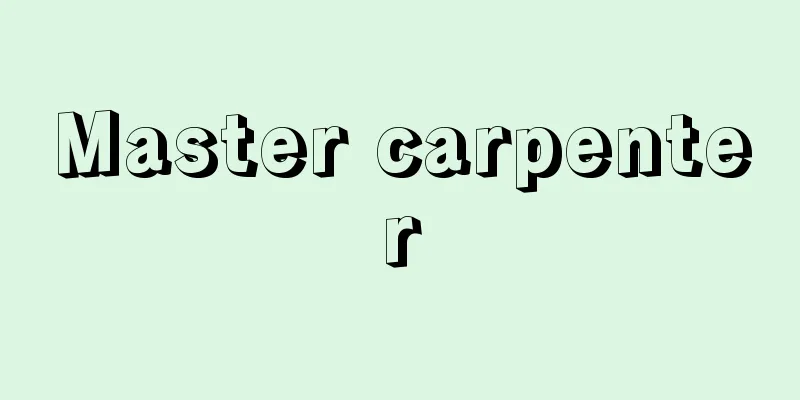Nothingness (English)

|
Strictly speaking, "nothing" should be something that does not "exist" in any sense, but in recent Western philosophy, "nothing" is often used to refer to things that are not existing things = beings . For example, according to Heidegger's What is Metaphysics? (1929), in the mood of "anxiety" that makes all things = beings as factual objects retreat and slide away, "nothing" that is "not" individual facts = beings is revealed. Moreover, when humans immerse themselves in the "nothing" revealed in the "bright night of the nothingness of anxiety," this is the occurrence of "transcendence" that transcends various beings as a whole while causing them to slide away, and this transcendence is more than a vague opposition to beings as individual facts, it is a submission to "being," which is the basis that makes beings beings. Therefore, in this kind of usage, "nothing" approaches "being" itself insofar as it is distinguished from beings . Incidentally, "nothing" in Sartre's major work Being and Nothingness (1943) differs from Heidegger's in that it ultimately means consciousness, subjectivity, and freedom. Sartrean consciousness is pure object-oriented action itself , and in no sense is it an object = thing = being, and therefore it can only be called "nothing." Sartre defined absolute action (being for itself) that does not include anything material, physical, or "existing in itself" as "nothing." [Yoshisuke Yamazaki] Nothingness in Chinese PhilosophyThe quintessence of the Chinese idea of nothingness can be seen in Wang Bi (226-249) of Wei, who developed the idea of nothingness in Laozi and Zhuangzi. Originally, nothingness in Laozi had the meaning of simple negation of existence as well as the meaning of existence. Therefore, it could be said that "being is born from nothingness." In this way, Laozi assumes nothingness that goes beyond the common opposition between existence and non-existence, but it does not reach a formal concept that can be obtained by completely denying real existence. The embryonic stage of the idea of nothingness is the beginning. Zhuangzi takes the thought a step further. It logically states that the meaning of existence is generated by the action of nothingness, as in "the use of nothingness," and this is due to the discovery of the indeterminacy and indefiniteness of nothingness. It goes on to say that if nothingness is something that must be particularly attached to as nothingness in relation to existence, then that nothingness must be denied. He Yan (?-249) of the Wei dynasty refuted the theory that "Tao is nothing, that is, nothingness" (The Theory of Nothingness). Viewing nothingness as the same as Tao, the highest concept in Taoism, became common in the Wei and Jin dynasties. In Laozi, Wang Bi comments on the passage "The Tao gives rise to one," saying, "All things have many forms, but their center is one. If you ask how they become one, it is through nothingness." Nothingness thus becomes a formal concept as an absolute unifying principle, and the traditional Taoism of Taoism is instead positioned below nothingness. "It is precisely because the Tao is formless and nameless that it can form all things" (Note to Chapter 1 of the Laozi). In this way, the concept of nothingness that had existed since the Laozi and Zhuangzi was organized and developed by Wang Bi, clarifying its ultimate fundamental nature as the ultimate cause that gives existence to all things and as a universal principle that unifies various distinctions. [Machida Saburo] "Heidegger's Anthology 1: What is Metaphysics?" translated by Oe Seishiro (1979, Risosha)" ▽ "Being and Nothingness, by Sartre, translated by Matsunami Shinzaburo, three volumes (1956-60, Jinbun Shoin)" ▽ "Tsuda Sokichi, Taoist Thought and Its Development (1939, Iwanami Shoten)" ▽ "Kanaya Osamu, "Nothingness in Laozi and Zhuangzi Thought" (included in Riso No. 382, 1965, Risosha)" ▽ "Mori Mikisaburo, The Idea of Nothingness (Kodansha Gendai Shinsho)" ▽ "Matsumoto Masaaki, The Development of Natural Thought in Ancient China (1973, Kokusho Kankokai)" Source: Shogakukan Encyclopedia Nipponica About Encyclopedia Nipponica Information | Legend |
|
厳密には、いかなる意味でも「存在」しないものを「無」というべきだが、最近の西洋哲学では、存在する事物=存在者ではないものをさして「無」とよぶことが多い。たとえばハイデッガーの『形而上(けいじじょう)学とは何か』(1929)によれば、事実的な対象としてある事物=存在者をすべて退去、滑落させる「不安」の情態性において、個々的な事実=存在者では「無い」ところの「無」が開示される。しかも、「不安の無の明るい夜」に開示されるその「無」のうちに、人間が情態(気分)的に己を投入することは、あれこれの存在者を全体として滑落させつつ越える「超越」の生起であり、この超越は個々的事実としての存在者に対する漠たる対立という以上に、存在者を存在者たらしめる根拠である「存在」に聴従することである。それゆえ、この種の用法における「無」は、存在者とは区別される限りでの「存在」そのものに近づく。 なお、サルトルの主著『存在と無』(1943)における「無」は、ハイデッガーの場合とも異なり、結局は意識、主体性、自由を意味する。サルトル的な意識はどこまでも対象指向的な純粋作用そのものであり、いかなる意味においても対象=事物=存在者ではなく、それゆえ「無」としかいえない。まったく質料的、物的、「即自存在」的なものを含まない絶対の作用性(対自存在)をサルトルは「無」と規定したわけである。 [山崎庸佑] 中国哲学における無中国における無の思想の精華は、『老子(ろうし)』や『荘子(そうじ)』の無を展開した魏(ぎ)の王弼(おうひつ)(226―249)にみることができる。元来『老子』の無は、有に対する単純な否定の意味とともに有の意味をもあわせもっていた。だから「有が無から生まれる」ともいえた。このように『老子』は通俗的な有無の対立を超えた無を想定してはいるが、現実存在を完全に否定しきったところに得られるような形式概念には至っていない。無の思想の萌芽(ほうが)的段階なのである。『荘子』は思索を一歩進める。「無用の用」というように、有の意義は無の作用によって生ずることを論理化したことで、それは無の無規定性、無限定性の発見に負うものである。そこでさらにいう。無が、有に対する無としてとくに執着されねばならないものであるならば、その無は否定されねばならない、と。 魏の何晏(かあん)(?―249)は「道は何もないもの、すなわち無である」(無名論)と道破(論破)する。無を道家(どうか)の最高概念である道と同じにみることは、魏・晋(しん)では一般化していった。王弼は『老子』で「道は一を生じ云々」に注して「万物は万形であるが、その中心は一である。何によって一になるかといえば、それは無によってである」という。無はここに至って絶対的な統一原理としての形式概念となり、道家の伝統的な道はむしろ無の下位に位置づけられる。「道は無形無名であるからこそ万物を形成できる」(『老子』1章注)。 こうして『老子』『荘子』以来の無は王弼によって整理展開され、万物を存在づける究極的原因であり、また雑多な差別を統一づける普遍的原理として、その究極的な根源性を明確にした。 [町田三郎] 『大江精志郎訳『ハイデッガー選集1 形而上学とは何か』(1979・理想社)』▽『サルトル著、松浪信三郎訳『存在と無』全三巻(1956~60・人文書院)』▽『津田左右吉著『道家の思想とその展開』(1939・岩波書店)』▽『金谷治「老荘思想における無」(『理想』382号所収・1965・理想社)』▽『森三樹三郎著『無の思想』(講談社現代新書)』▽『松本雅明著『中国古代における自然思想の展開』(1973・国書刊行会)』 出典 小学館 日本大百科全書(ニッポニカ)日本大百科全書(ニッポニカ)について 情報 | 凡例 |
Recommend
Honjo [city] - Honjo
An old city facing the Sea of Japan in southwest...
Towiański, A.
…In Paris, the greatest intellectuals of the time...
Pistacite
...In the strict sense, it is a mineral with the ...
Neugrad
…It was created during the French Revolution to a...
S wave - S is
Among seismic waves, this is one of the elastic bo...
Daniil Aleksandrovich
…This is the origin of the Kremlin. In 1237-38, t...
Sleeping laugh - Seisuisho
Hanashibon (a book of humorous tales). Eight volu...
fan out
…Usually abbreviated as IC, it is defined as “a c...
prāṇa (English spelling) prana
…Pneuma also originally meant breath, wind, or ai...
Longicorn beetle - Longicorn beetle
A general term for insects belonging to the famil...
Salmon and sea bass
A general term for fishes belonging to the order S...
Namdinh (English spelling)
The capital of Nam Dinh Province in northern Viet...
Sclerotium - Sclerotium
… They grow almost everywhere in nature, and uniq...
Acacia farnesiana (English spelling) Acaciafarnesiana
…[Hiroshi Aramata]. … *Some of the terminology th...
Karate
It is a martial art that originated and has been ...









